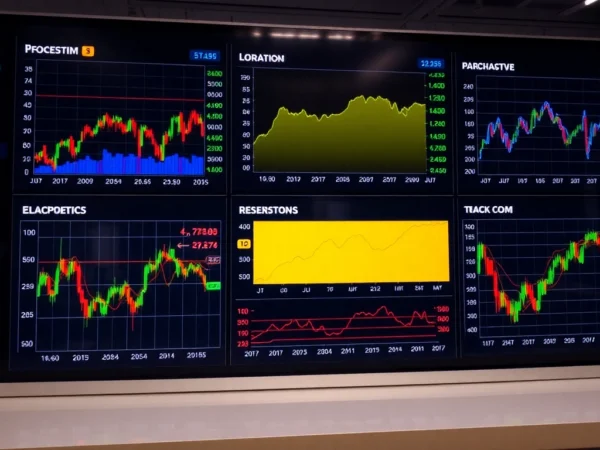Comprehensive Property Market Updates: Key Trends and Insights for 2025
Comprehensive Property Market Updates: Key Trends and Insights for 2025
The UK property market continues to evolve amidst a complex mix of economic factors, policy shifts, and shifting investor sentiment. Staying informed about the latest Property Market Updates is essential for both prospective homeowners and seasoned investors aiming to capitalize on emerging opportunities. In this article, we delve deep into current market trends, analyze recent fluctuations in mortgage lending, forecast future movements, and provide strategic guidance to navigate this dynamic landscape effectively.
Understanding Current Property Market Trends in the UK
Recent Changes in House Prices and Mortgage Rates
As of 2024, UK property prices have demonstrated resilience despite various economic headwinds. Recent data reveals that the average house price has increased by approximately 7.7% annually, translating to an approximate £16,000 rise compared to the previous year. However, the growth rate has moderated in some regions, with a slight dip during summer months—highlighting caution among buyers amid rising mortgage costs.
Mortgage rates are a pivotal factor influencing affordability and market activity. The ‘effective’ interest rate, which reflects the actual borrowing cost on newly drawn mortgages, has declined for five consecutive months, reaching 4.28%. This decline is partly driven by recent rate cuts from the Bank of England, which aim to stimulate economic activity. Nevertheless, after the pullback from sub-4% rates by major lenders, potential homebuyers face limited product options, with the total number of available mortgage products decreasing from 6,842 to even fewer offerings in recent months.
For further insights on how these fluctuations impact property affordability and investment potential, explore our comprehensive Property Market Updates.
Impact of Economic Factors and Government Policies
The UK housing market is heavily influenced by macroeconomic conditions and government interventions. Recent economic challenges include inflationary pressures, which in turn impact mortgage rates and borrowing costs. Additionally, the government’s stance on taxes—such as potential reforms and consultations by the Treasury—poses significant uncertainties. For instance, recent proposals to introduce new property taxes could alter investment dynamics and transaction volumes.
Furthermore, supply constraints remain a critical issue. Reports indicate a ‘dire’ housing shortage, with RICS highlighting the impact of limited new build completions, pushing prices upward and creating barriers for first-time buyers. Conversely, some regions experience a cooling effect, with house prices dipping by an average of £10,000 over the summer, indicating regional disparities and localized market corrections.
Staying abreast of policy changes and economic indicators allows investors to anticipate market shifts and adapt strategies accordingly, underscoring the importance of continuous market analysis.
Analyzing Mortgage Rate Fluctuations and Lending Patterns
Recent Shifts in Mortgage Product Offerings
The mortgage landscape has experienced notable shifts, primarily characterized by a reduction in the variety of available products. Recent reports show a decline from over 6,800 options to significantly fewer offerings, reflecting lenders’ cautious approach in a period of economic uncertainty. Fixed-rate products remain popular, with 46% of borrowers opting for two-year fixes, although longer-term options like five-year fixes are also sought, at 41%.
These shifts are driven by lenders’ risk appetite adjustments, tighter credit criteria, and the need to manage potential defaults amid rising costs. Such trends increase the importance of working with knowledgeable mortgage brokers who can identify suitable products aligned with individual financial situations and long-term plans.
How Rate Cuts Influence Lending and Borrowing
Reduce in borrowing costs due to recent rate cuts has temporarily boosted mortgage approvals, signaling improved borrowing capacity and increased market activity. However, with major lenders pulling sub-4% deals, the availability of attractive fixed-rate mortgages has diminished, creating a challenging environment for new entrants and remortgagers alike.
For investors, these fluctuations can impact cash flow projections and refinancing strategies. A key takeaway is the importance of timing in securing favorable mortgage terms, especially given the trend toward short-term deals amid surging remortgage activity.
Emerging Mortgage Options for Investors and Homeowners
Despite recent constraints, lenders are beginning to explore innovative mortgage products to meet demand, including flexible remortgage deals, interest-only options, and tailored lending for specific sectors such as student housing. As Morgan Stanley points out, student accommodation remains resilient, offering attractive yields even amidst broader market volatility.
Prospective investors should monitor these developments and consider diversifying their portfolios with asset classes that exhibit robust performance and resilience to macroeconomic shocks.
Forecasting Future Property Market Movements
Predicted House Price Increases and Market Stability
Experts forecast a modest 3% rise in UK house prices in 2025, driven by ongoing supply shortages and sustained demand. While some regions might experience stabilization or slight corrections, broader market fundamentals remain strong, supported by demographic shifts and persistent underbuilding.
However, vulnerabilities such as potential policy reforms—particularly tax hikes—and global economic uncertainty could temper growth. Investors should adopt a cautious yet opportunistic approach, focusing on markets with high resilience indicators.
Effects of Policy Changes and Tax Reforms
Government initiatives, including proposed property taxes and reforms to stamp duty relief policies, could significantly influence transactional activity. Recent discussions suggest that additional taxes could act as a ‘final nail in the coffin’ for some investment strategies, especially for smaller portfolios.
Staying informed about these policy developments and adjusting investment models accordingly will be crucial for maintaining profitability in the evolving landscape.
Market Vulnerabilities and Growth Opportunities
Market vulnerabilities include high dependency on regional markets with limited supply and potential price corrections in overheated areas, especially those vulnerable to a 20% drop from recent peaks. Conversely, growth prospects lie in sectors like student housing and rental property investments, which are expected to strengthen due to tighter immigration rules and changing demand patterns.
Evaluating performance metrics and microsite data can help identify emerging hotspots and underserved markets for strategic entry.
Strategies for Investors and Homebuyers in a Dynamic Market
Best Practices for Leveraging Property Market Updates
Regularly reviewing comprehensive property market updates enables investors and homebuyers to identify shifting trends and capitalize on favorable conditions. Key practices include tracking regional price movements, mortgage rate trajectories, and transaction volumes to time purchases or refinancing optimally.
Tips for Securing Favorable Mortgage Deals
Given the current landscape, prospective buyers should seek fixed-rate deals with longer terms where possible and engage with mortgage brokers who can access exclusive products. Also, evaluating the total cost of borrowing, including fees and early repayment penalties, ensures better long-term planning.
Long-term Investment Planning Amidst Market Trends
Long-term investors should focus on assets with strong fundamentals—such as rental yields and growth potential—while maintaining flexibility to adapt to changing policies and economic conditions. Diversifying across regions and asset classes mitigates risk and enhances portfolio resilience.
Utilizing Data and Reports for Informed Decision-Making
Interpreting Property Transaction Statistics
Monitoring data from HMRC and other sources reveals that residential transactions increased by 4% in July, totaling approximately 95,580 transactions. Analyzing these figures in conjunction with price trends helps identify market momentum and potential turning points.
Key Indicators and Reports to Watch in 2025
Vital indicators include mortgage approval rates, effective interest rates, house price indices, and policy announcements. The Moneyfacts UK Mortgage Trends Treasury Report and RICS housing reports provide invaluable insights into supply-demand dynamics and lender sentiment.
Tools and Resources for Ongoing Property Market Analysis
A comprehensive approach involves leveraging online valuation tools, demographic data, regional economic reports, and specialized analytics platforms. Engaging with local estate agents and industry experts further enhances market intelligence, helping investors make data-driven decisions.








